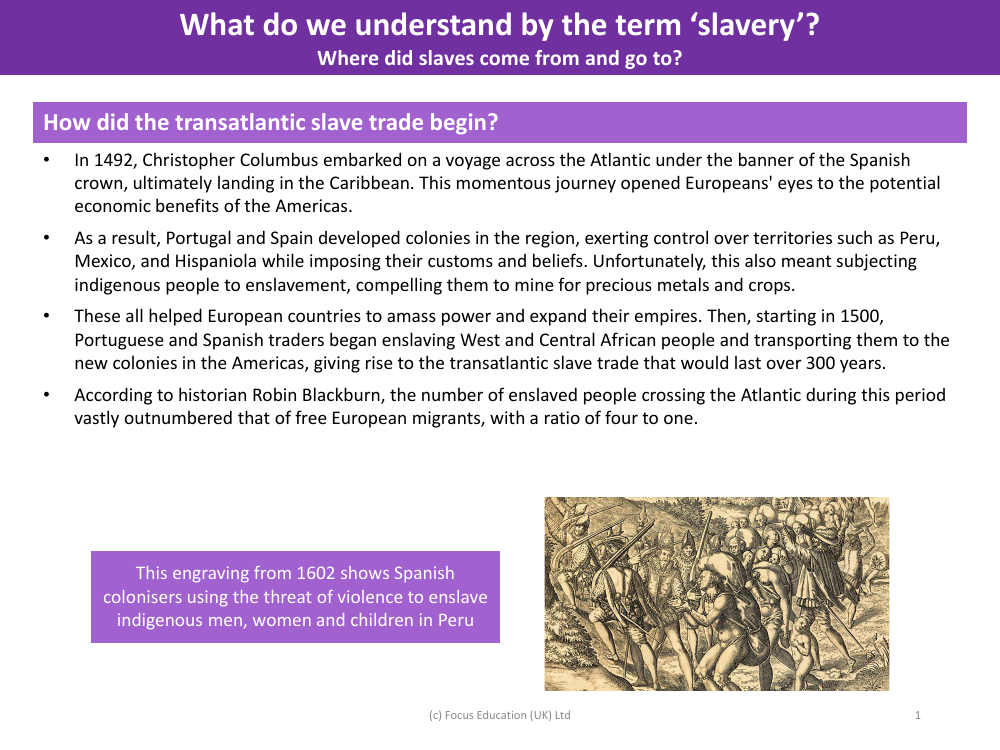How did the transatlantic slave trade begin? - Slavery - Year 5

History Resource Description
The origins of the transatlantic slave trade can be traced back to the late 15th century when Christopher Columbus set sail across the Atlantic in 1492, sponsored by the Spanish crown. His arrival in the Caribbean was a catalyst for European nations to realise the economic possibilities of the Americas. Spain and Portugal, in particular, quickly established colonies in the New World, including territories like Peru, Mexico, and Hispaniola. These colonies were not only a means to spread European influence but also became sites of exploitation where indigenous populations were forced into slavery to extract valuable resources such as precious metals and to cultivate crops.
By the start of the 16th century, the exploitation had evolved into the transatlantic slave trade. Portuguese and Spanish traders began to enslave people from West and Central Africa, forcibly transporting them to work in the American colonies. This marked the beginning of a brutal and extensive trade system that would endure for over three centuries. Historical records suggest that the scale of this forced migration was immense, with the number of African individuals sent into slavery far exceeding the number of free Europeans who migrated to the Americas during the same period. The term 'slavery' encompasses the forced subjugation and exploitation of individuals, stripping them of freedom and autonomy. These enslaved people were taken from their homelands and sent to various destinations across the Atlantic to toil in harsh conditions.





